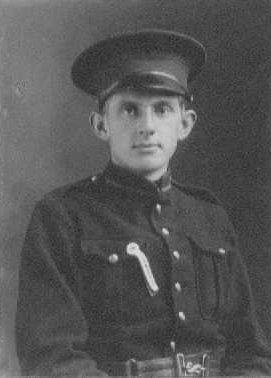
copyright © Wartime Heritage Association
Website hosting courtesy of Register.com - a web.com company
Wartime Heritage
ASSOCIATION
Remembering World War I
Yarmouth Connections

Name:
Keith Bruce Crosby
Regimental Number:
415769
Rank:
Private
Battalion:
40th Battalion/24th Battalion
Place of Birth:
Carleton, Yarmouth Co., NS
Date of Birth:
April 25, 1897
Date of Enlistment:
August 7, 1915
Place of Enlistment:
Aldershot, NS
Address at Enlistment:
Age at enlistment:
18
Height: 5 Feet, 5½ inches
Complexion: fresh
Eyes: Hazel
Hair: light brown
Trade or Calling:
labourer
Marital Status:
Single
Religion:
Presbyterian
Next of Kin:
Howard Crosby (Father) Carleton, Yarmouth Co., NS
Date of Death:
April 11, 1916
Cause of Death:
Killed in Action
Age at Death:
19
Memorial:
Menin Gate (Ypres) Memorial, Belgium (Panel 24 - 26 - 28 - 30)
Commemorated on Page 73 of the First World War Book of Remembrance
displayed in the Memorial Chamber of the Peace Tower in Ottawa on February 23
Listed on the War Memorials, Yarmouth and Carleton Nova Scotia
Listed on the Nominal Roll of the 40th Battalion.
Keith was the son of Howard A. and Lillian S. Crosby of Carleton, Yarmouth County NS.
Having trained in Canada with the 40th Battalion, he went overseas arriving in England on
October 28, 1915.
In England he was transferred to the 24th Battalion. On March 20, 1916 he joined the 24th
Battalion in the field. On April 11, 1916 he was killed in action.
Private Crosby was killed at the St. Eloi craters south of Ypres, Belgium. There had been
action along the front of the St. Eloi craters between the 27th of March and the 16th of April
1916. On the 6th of April at 3.30 a.m. the Germans attacked, taking four craters. The front
line positions were complex and difficult made harder by the fact that the six new craters
now made a total of 17 in the area, and telling them apart especially in the dark was nearly
impossible. In the following days, the Canadians made several attacks to try and recover
some of the craters, but these failed, and in view of the forthcoming major operations on
the Somme no further offensive moves were made here. The fighting was often confused
with heavy enemy shelling. Snipers were active and the salient was narrow within range of
the German guns. The body of Keith Crosby was never recovered.
Keith Bruce Crosby


Additional Information and Letters:
http://wartimeheritage.com/storyarchive1/storylffkeithcrosby.htm
Sources:
Canadian Virtual War Memorial
Library and Archives Canada
A Monument Speaks (A Thurston; pub. 1989)



- World War I - Menu
- WWI Stories and Articles
- Photos - Yarmouth Soldiers
- Selection of World War I Songs
- WWI Casualties of Yarmouth, NS
- Those Who Served - Yarmouth, NS
- WWI Casualties Digby Co. NS
- WWI Casualties Shelburne Co. NS
- Merchant Mariners (1915) Yarmouth, NS
- Canadian Forestry Corps - Non Yarmouth Birth/Residence Enlistments
- US Draft Registry - Yarmouth NS Born


- World War II - Menu
- WWII Stories and Articles
- Telegraphist Air Gunners
- WWII Casualties of Nova Scotia
- US Casualties with NS Connection
- Far East/Pacific Casualties with NS Connection
- Merchant Navy Casualties Nova Scotia
- Nova Scotia WWII Casualties Holten Canadian War Cemetery
- D-Day Casualties - Nova Scotia
- CANLOAN Program Casualties - Nova Scotia
- Battle of the Bulge Casualties - Nova Scotia
- WWII Casualties Yarmouth NS
- Yarmouth Casualties - RCAF RAF Canadian Army WWII
- Yarmouth Co., Marriages WWII
- Casualties Non-Born/Residents with Connection to Yarmouth Co., Nova Scotia.
- WWII Casualties Digby Co., NS
- Non-Nova Scotian WWII Casualties Buried in Nova Scotia
- WWII RCAF Casualties Aged 16-18
- Brothers/Sisters Who Served - World War II













